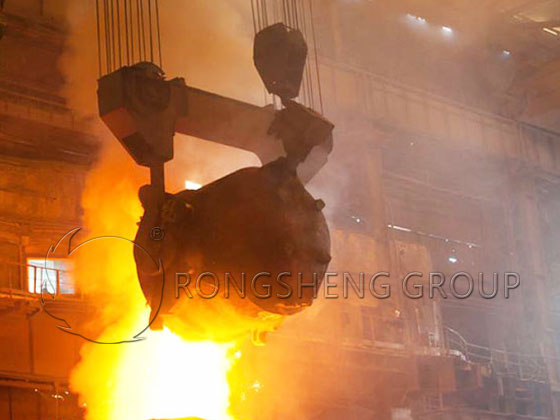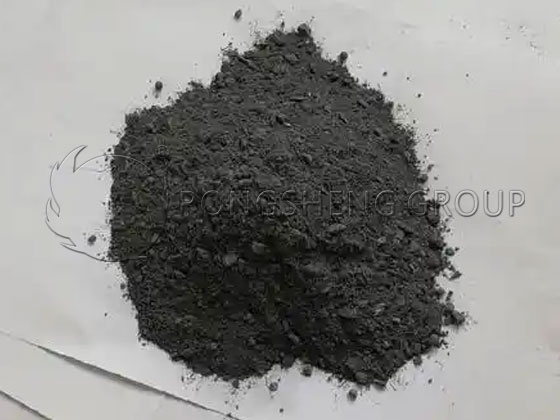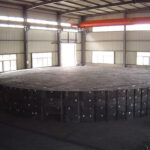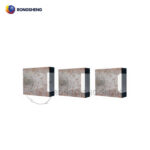Application of Monolithic Refractory Materials in the Metallurgical Industry
In industrialized countries, the utilization rate of monolithic refractories in the metallurgical industry exceeds 50%. With the rapid development of smelting technology and the steel industry, metallurgical refractories have also undergone a complete technological revolution. They have moved away from a heavy reliance on natural raw materials and raw products, and are now increasingly focused on refined products based on synthetic materials. Monolithic refractories offer significant advantages over shaped refractories, due to their ease of mechanized and automated production and their ability to extend their service life through repair. They have become an essential component of metallurgical production.

Specific Applications of Monolithic Refractories in the Metallurgical Industry
Application of Monolithic Refractories in Blast Furnaces
As a crucial piece of equipment in the metallurgical industry, traditional blast furnaces utilize steel plates for their shells, lined with refractory bricks. These are typically constructed using precast blocks of high-alumina cement or high-alumina phosphate refractory castables. Modern blast furnaces primarily utilize resin-bonded aluminum-carbon unburned bricks. The water-cooled walls of large blast furnaces utilize SiC castables, while the furnace floor cushion and surrounding brick joints are filled with silicon nitride. The use of castable refractories for the furnace walls has become a common practice in the industry, achieving excellent results. For example, the Al₂O₃ castable used in the No. 2 blast furnace of a certain steel pipe plant has exhibited no significant spalling for six consecutive years. Currently, Al₂O₃-SiC-C (ASC) and mullite-SiC-C castables are the most commonly used monolithic refractories for blast furnace tapping channels. These include “ASC” castables and SiC-C ramming materials, with SiC corundum being the primary material used in the metallurgical industry.
Application of Unshaped Refractories in Ladles
Due to rising tapping temperatures and extended steel retention times in the ladle, unshaped refractories are gradually being replaced by shaped refractories in ladle refractory applications. The unshaped nature of the ladle allows for automated production, helping to increase productivity and efficiency. Practical experience shows that the unshaped sidewalls of the ladle can save approximately 40% of maintenance man-hours. When the ladle is entirely unshaped, the labor savings can reach 70% or more. Currently, many steel companies use Al₂O₃-spinel castables as refractory materials in their ladles. This material offers excellent corrosion resistance, minimal structural impact at high temperatures, and can extend the service life of thermal equipment. However, its performance is still affected by tapping temperature and steel retention time. To address this technical challenge, Al₂O₃-MgO castables, aluminum-magnesium-carbon refractory castables, and magnesia-based refractory materials have been developed. These new materials have significantly improved their strength and permeability resistance, and are therefore more effective in ladle applications.
Application of Monolithic Refractories in Heating Furnaces
Heating furnaces are used to heat steel billets at high temperatures, reaching temperatures as high as approximately 1400°C. Their roofs and linings can be constructed using castables or plastics. The linings of large walking-beam furnaces can generally be made of plastic refractory materials, offering an average service life of approximately 12-15 years. For walking-beam furnaces in high-speed wire rod plants, which require higher refractoriness due to their larger furnace bodies, clay-structured castables can be used. This material is not only easy to machine, but also exhibits no honeycombing after demolding and exhibits excellent flowability, making it ideal for the operating environments of thermal equipment.

Advantages of Monolithic Refractory Materials in the Metallurgical Industry
As the primary refractory material in today’s metallurgical industry, monolithic refractory materials offer unique advantages, primarily in the following areas:
1. High Refractoriness
The fundamental property of refractory materials is that they resist softening and deformation at high temperatures. Different refractory materials exhibit varying temperatures for softening under load. To ensure the structural strength of thermal equipment at its highest operating temperatures and maintain a long service life, materials with a refractoriness exceeding the maximum operating temperature of the equipment must be selected. High-temperature kilns are common equipment in the metallurgical industry, and smelting operations place high demands on the refractoriness of their linings. Monolithic refractory materials generally have a refractoriness of over 1500°C, which effectively meets the operating conditions of blast furnaces, extending their service life and improving the performance of smelted products.
2. Lower Energy Consumption
Generally, shaped refractories require a special firing process, which is complex and energy-intensive, resulting in high production costs. The greatest advantage of monolithic refractories is that they eliminate the firing step, thus avoiding significant energy waste. Under the same operating conditions, their energy consumption is on average 15 to 20 times lower than traditional refractory bricks, resulting in superior economic efficiency and a key reason for their widespread adoption in the modern metallurgical industry.
3. Higher Metallurgical Efficiency
By eliminating the firing step, monolithic refractories not only significantly reduce energy consumption but also simplify the smelting process, significantly reducing smelting time and improving metallurgical production efficiency. In practical production operations, monolithic refractories are generally 3 to 5 times more efficient than refractory bricks.
4. Superior Integrity
Because monolithic refractories are much smaller than conventional refractories, they are easier to transport, meeting the requirements for large-scale shipments and reducing transportation costs. Furthermore, their exceptional plasticity allows them to be formed into any desired shape. Their compact internal structure and strong cohesion allow them to form the lining of high-temperature kilns using monolithic refractories as a single unit. This makes them less susceptible to damage from the high temperatures of the smelting process, significantly extending the service life of high-temperature kilns, typically by 30% to 150% compared to traditional refractory bricks. Furthermore, their monolithic nature allows them to be sealed much better than shaped refractories, thereby reducing overall energy consumption.
Compared to shaped refractories, monolithic refractories do not require a complex firing process. The raw materials required for their production are readily available, inexpensive, and the manufacturing process is simple. Furthermore, their exceptional plasticity allows them to achieve refractoriness and chemical stability comparable to similar refractory bricks, making them easy to prefabricate into blocks. During smelting, it is easy to produce products of various complex shapes, and it facilitates mechanized furnace construction. It is also relatively convenient to use and can be used directly or after mixing. However, due to its disadvantages, such as long baking time at low temperatures, low strength at medium temperatures, and easy peeling after long-term use at high temperatures, it requires high baking technology. Furthermore, it has limited volume stability, high porosity, average corrosion resistance, and can also experience quality fluctuations. While easy to use, disassembly after use is not easy, requiring specialized on-site equipment.
To purchase high-quality monolithic refractory materials and obtain pricing, please contact Rongsheng.





